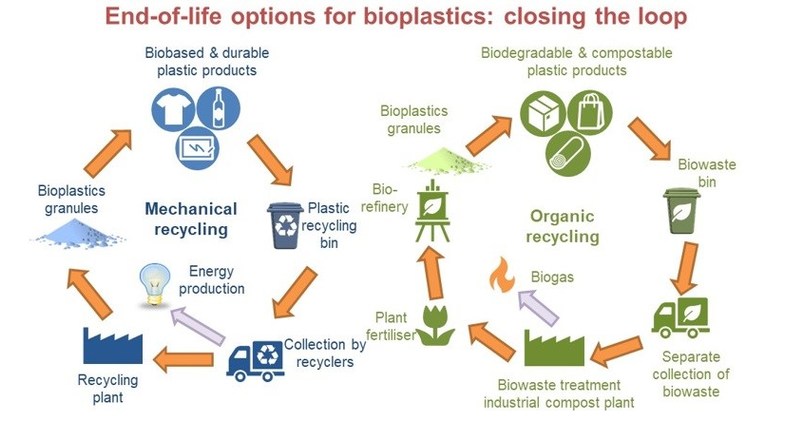Biodegradable and Bioplastics Products: A Sustainable Future

The global shift towards sustainability has led to a growing interest in biodegradable and bioplastic products. As awareness of environmental issues increases, consumers and industries are seeking eco-friendly alternatives to traditional plastics. This article explores various biodegradable and bioplastic products, including tableware, food containers, toilet paper, cassava bags, carry bags, BioPET, and polylactic acid (PLA), highlighting their benefits and potential impact on the environment.
Understanding Biodegradable and Bioplastics
Biodegradable Plastics are designed to decompose under natural conditions, breaking down into water, carbon dioxide, and biomass with the help of microorganisms. This process reduces the long-term impact on landfills and the environment.
Bioplastics are derived from renewable biomass sources, such as vegetable fats and oils, corn starch, and microbiota. Unlike conventional plastics made from fossil fuels, bioplastics can be biodegradable or non-biodegradable, but their primary advantage is the reduced carbon footprint.
Types of Biodegradable and Bioplastic Products
Tableware and Food Containers
- Material Composition: Typically made from PLA, a renewable resource derived from fermented plant starch (usually corn).
- Advantages: Compostable, reducing landfill waste; non-toxic; and made from renewable resources.
- Applications: Used in restaurants, cafes, and for personal use, these products help reduce plastic waste associated with disposable cutlery and containers.
Toilet Paper
- Material Composition: Made from recycled paper or bamboo, both of which are sustainable resources.
- Advantages: Reduces deforestation and landfill waste; bamboo toilet paper is naturally antibacterial and soft.
- Applications: Used in households and businesses, biodegradable toilet paper supports sustainable forestry practices.
Cassava Bags
- Material Composition: Derived from cassava starch, a renewable and biodegradable resource.
- Advantages: Completely biodegradable; breaks down quickly in marine environments, reducing ocean pollution; non-toxic.
- Applications: Used for grocery bags and packaging, offering an eco-friendly alternative to plastic bags.
Carry Bags
- Material Composition: Often made from PLA or other bioplastic blends.
- Advantages: Compostable and derived from renewable resources; helps reduce plastic bag pollution.
- Applications: Used in retail and grocery stores, these bags are designed to replace single-use plastic bags.
BioPET (Biopolyethylene Terephthalate)
- Material Composition: Made from renewable plant materials, such as sugarcane, yet has the same properties as conventional PET.
- Advantages: Recyclable and has a lower carbon footprint compared to traditional PET; maintains the same durability and versatility.
- Applications: Used for bottles, packaging, and textiles, offering a sustainable option without compromising on quality.
Polylactic Acid (PLA)
- Material Composition: A bioplastic derived from fermented plant starch.
- Advantages: Compostable under industrial conditions; versatile and can be used in various applications from packaging to 3D printing.
- Applications: Used in making disposable cups, straws, containers, and even medical implants.

Benefits of Biodegradable and Bioplastic Products
Environmental Impact
- Reduction in Plastic Waste: Biodegradable products break down faster, reducing the burden on landfills and the natural environment.
- Lower Carbon Footprint: Bioplastics are derived from renewable resources, which can absorb CO2 during their growth cycle, leading to a smaller carbon footprint.
- Reduced Pollution: Products like cassava bags degrade quickly in marine environments, mitigating ocean pollution.
Economic Benefits
- Job Creation: The bioplastic industry promotes agricultural jobs and supports local economies.
- Innovation and Investment: The demand for sustainable products drives innovation, leading to new technologies and investment opportunities.
Health and Safety
- Non-toxic: Many bioplastics are free from harmful chemicals found in traditional plastics, such as BPA.
- Safe Degradation: As these products degrade, they do not release toxic substances into the environment.
Challenges and Considerations
- Cost: Bioplastic products are often more expensive to produce than conventional plastics, which can be a barrier to widespread adoption.
- Infrastructure: The lack of composting facilities and recycling infrastructure for bioplastics can limit their environmental benefits.
- Consumer Awareness: Educating consumers about the benefits and proper disposal of biodegradable and bioplastic products is crucial for their success.
Future Outlook
The future of biodegradable and bioplastic products is promising. As technology advances and production costs decrease, these products are likely to become more mainstream. Governments and organizations worldwide are increasingly supporting policies and initiatives to reduce plastic waste and promote sustainable alternatives.
Innovation in materials science will continue to improve the properties and applications of bioplastics. For instance, ongoing research into new biopolymers and composites could lead to even more sustainable and versatile products.
Conclusion
Biodegradable and bioplastic products represent a significant step towards a more sustainable future. By replacing traditional plastics with eco-friendly alternatives like tableware, food containers, toilet paper, cassava bags, carry bags, BioPET, and PLA, we can reduce our environmental footprint and move towards a circular economy. While challenges remain, the benefits of these products for the environment, economy, and human health make them a vital component of our efforts to combat plastic pollution and climate change.










